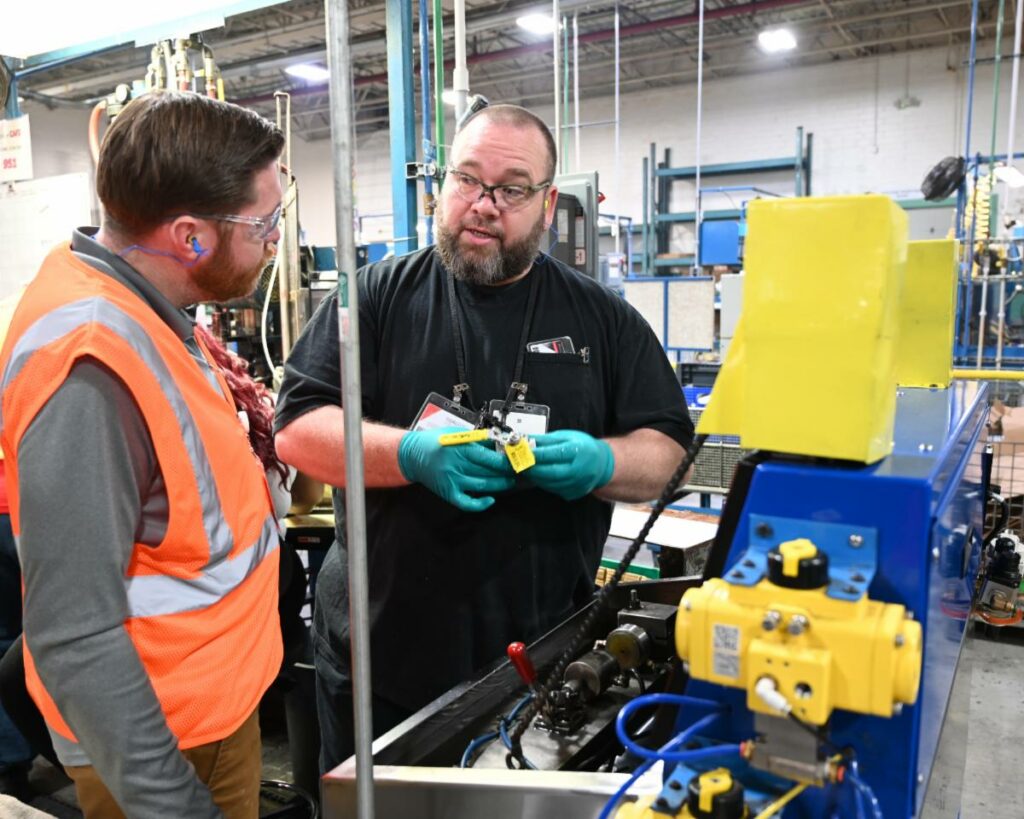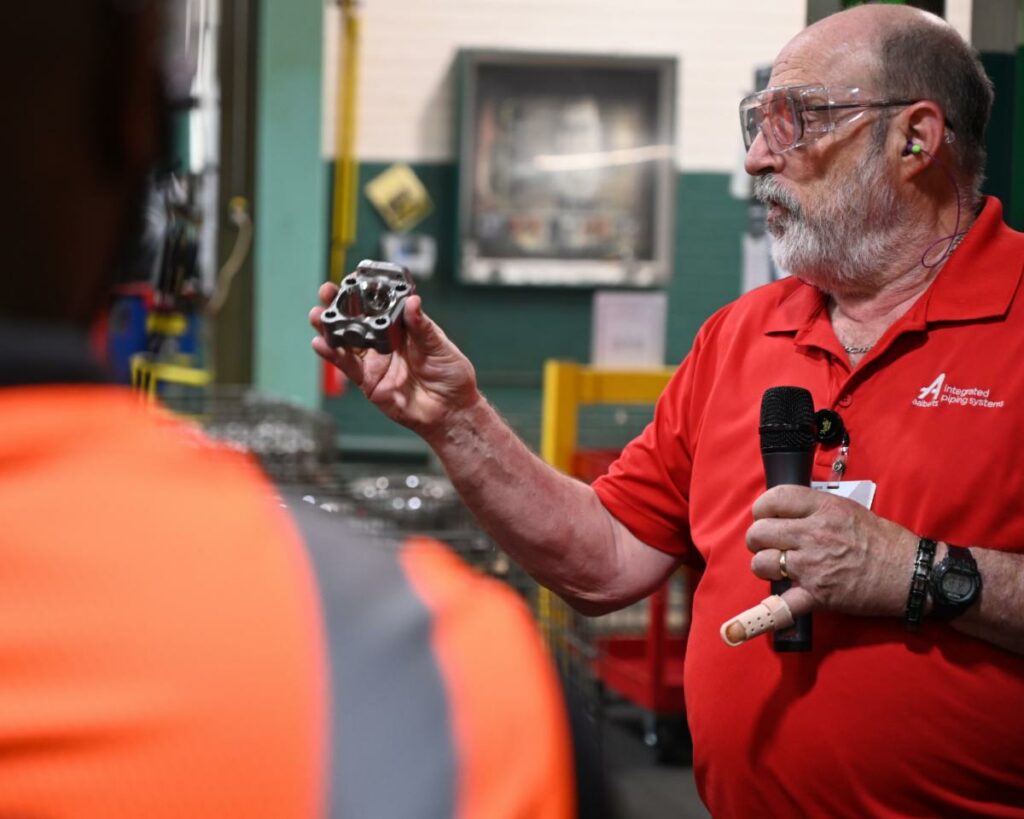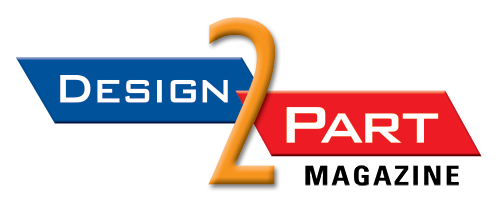
James Sturgeon, plant director at Aalberts Integrated Piping Systems’ Conway, S.C., facility, oversees the entire valve production process, from foundry and machining to final assembly. (Photo courtesy Aalberts IPS)
Recent years have underscored how fragile outsourced supply chains can be. The more control you have over your supply chain, the better positioned you are to deliver.
By James Sturgeon
Plant Director
Aalberts Integrated Piping Systems
The value of domestic production has become clearer than ever in today’s manufacturing climate. From global supply chain volatility to skilled labor shortages and growing compliance demands, U.S. manufacturers are contending with a complex, fast-shifting environment. For those willing to invest in long-term operational resilience, reshoring and vertical integration present a meaningful opportunity.
Rather than relying on fragmented international suppliers, more manufacturers are recognizing the strategic advantages of building vertically integrated domestic operations. This approach not only supports greater quality control and agility, but it also helps manufacturers retain critical institutional knowledge, foster workforce continuity, and serve as regional economic anchors. The result is a more agile, responsive, and community-invested industry that can pivot faster and grow more sustainably.
How vertical integration builds agility and resilience
Recent years have underscored how fragile outsourced supply chains can be. The more control you have over your supply chain, the better positioned you are to deliver.
Companies that invest in vertical integration—including handling casting, machining, assembly, testing, and even metallurgical analysis in-house—are better equipped to plan for their customers and respond quickly to market shifts. Instead of relying on a patchwork of global vendors, they manage the entire process under one roof.
While this model may require a greater up-front investment, it pays off in shorter lead times, higher traceability, and long-term value. With vertical integration, lead times can be measured in days or weeks rather than months, which is critical in industries where timing, reliability, and responsiveness are everything.
Centralizing and maintaining complete control of every step of manufacturing, testing, and service enables companies to meet their customers’ needs not only more effectively, but more efficiently. In a world where international supply chain issues can stall or halt manufacturing processes, the ability to trace, track, and maintain every aspect of your process is a huge leg up.
Such a customer-centric supply chain model also enables smarter decision making at every stage. From forecasting and scheduling to real time adjustments, in-house operations can move with speed and precision. Instead of outsourcing critical steps and hoping for alignment, vertically integrated manufacturers can see how changes they make impact their workflow in real time, allowing them to optimize for quality, delivery, and performance internally.
Workforce stability as a competitive asset
One often overlooked benefit of domestic, vertically integrated manufacturing is the ability to keep teams centralized—not just in terms of organizational structure, but in physical proximity. When operations share the same space, data and insights flow more freely, both formally and informally. Cross-functional collaboration becomes more seamless, oversight improves, and teams are better aligned under a shared culture. In contrast, fragmented teams can struggle with miscommunication, inconsistent standards, and slower response times.

When operations share the same space, data and insights flow more freely, both formally and informally. Cross-functional collaboration becomes more seamless, oversight improves, and teams are better aligned under a shared culture. (Photo courtesy Aalberts IPS)
Within these centralized environments, workforce longevity becomes a powerful asset. Skilled, experienced teams bring consistency, deep institutional knowledge, and the ability to train new hires in the nuances of complex systems. With labor shortages persisting across the industry, companies that prioritize retention and internal development are better positioned to weather workforce disruptions.
Additionally, rather than replacing legacy workers with automation, forward-looking manufacturers use technology to support and enhance the people already in place. Internal mentoring, cross-training, and partnerships with local technical schools help foster a strong culture of knowledge transfer that thrives when everyone shares the same floor, sees the same challenges, and learns from each other in real time.
Customization as a growing expectation
As customer needs become more specialized and installation requirements more complex, manufacturers are being asked to move beyond standard products. Meeting these needs requires engineering and production teams that can collaborate quickly to adapt designs, retool processes, and deliver tailored solutions.
This type of responsiveness is far easier to achieve when the entire process, from development to final assembly, is centralized. Manufacturers that invest in tight integration between engineering and production can reduce turnaround times without compromising quality. This agility is becoming a non-negotiable advantage in sectors where installation efficiency, project specific compatibility, and longevity all matter.
Manufacturing that supports the community
Domestic manufacturing delivers benefits far beyond operational metrics. Facilities that stay rooted in their communities often become engines of economic stability, offering long-term career paths and generational skill development. In many successful operations, it’s not uncommon to see employees with 10, 15, or even 20 years of tenure. That kind of stability doesn’t just happen; it’s the result of intentional investment in people.
One key strategy is forging partnerships with local technical schools and training programs. These collaborations help bridge the gap between classroom learning and real-world application, providing students with valuable exposure to advanced manufacturing processes. For manufacturers, it’s an opportunity to build a pipeline of motivated, skilled workers who already understand the industry’s pace and standards.
It’s also crucial to recognize that skills can often be taught, while character and culture alignment cannot. New hires should be evaluated not just for technical know-how, but for their ability to integrate into a quality- and safety-driven environment. With strong mentorship and clear advancement paths, employees are given the tools to grow into highly skilled roles over time.
The ROI of domestic integration
For many U.S. manufacturers, the decision to reshore operations is driven by more than just economic nationalism; it’s about long-term ROI. [Global] outsourcing may deliver short term savings, but it often sacrifices flexibility, quality oversight, and customer responsiveness.
By contrast, domestic manufacturing allows for tighter control and greater accountability. Every product can be treated as though it’s destined for the most demanding service environment, ensuring consistent quality regardless of the application.

Internal mentoring, cross-training, and partnerships with local technical schools help foster a strong culture of knowledge transfer that thrives when everyone shares the same floor, sees the same challenges, and learns from each other in real time. (Photo courtesy Aalberts IPS)
Metallurgical testing, for example, becomes an internal strength rather than an external checkbox, allowing teams to verify material performance and durability on the spot. While these capabilities require investment, they offer something outsourcing can’t, which is a unified, agile production model capable of evolving in real time. As customer expectations increase and regulatory pressures mount, this adaptability becomes a serious competitive edge.
Additionally, expectations around transparency, compliance, and long-term reliability are on the rise, and detailed traceability is becoming a baseline requirement. Companies that invest in robust tracking systems, much easier to implement with a vertical process, and in-house quality verification can offer a level of material accountability that global outsourcing simply can’t match.
Aalberts Integrated Piping Systems (IPS), a global [provider of] fluid handling technology, exemplifies how these best practices can be brought to life. At its facility in Conway, South Carolina, the company has created a vertically integrated manufacturing environment that manages everything from melting and casting to machining, assembly, and metallurgical testing.
The company’s long-tenured workforce is supported by a mentoring culture and partnerships with local schools, allowing new employees to develop skills through real-world coaching. Employees who were once trainees are now team leads, ensuring knowledge is passed along organically. The Conway team also supports its local community through initiatives like food drives and family events, reinforcing the facility’s role as a regional economic anchor.
From a production standpoint, Aalberts IPS maintains detailed chemical records and retains physical samples to ensure traceability across years. By managing these processes in-house, the company has reduced lead times to weeks instead of months, even for custom orders, while ensuring every product meets strict quality standards for its customers.
The Aalberts IPS team knows how investing in a centralized team, domestic processes, and the community where your company resides will lead to lasting industrial strength. From improved workforce stability to increased agility and improved customer satisfaction, the benefits of a vertically integrated domestic supply chain truly are multifold.
Rooted for the long haul
Manufacturing in the U.S. isn’t solely about jobs. Instead, it’s about building industrial ecosystems that last. The companies that thrive are those that treat resilience not as a one-time fix, but as a continuous practice, investing in people, maintaining in-house capabilities, and strengthening local ties.
The lessons are clear for any manufacturer facing today’s challenges: Supply chain volatility, labor shortages, and the push for sustainable practices all demand deeper roots. Building workforce continuity, committing to domestic infrastructure, and treating technology as an enhancement, not a shortcut, can transform manufacturers from reactive operators to proactive industry leaders.
Resilience isn’t something you wait to build in a crisis. It’s something you nurture daily, through mentorship, community investment, and a commitment to doing things the right way. For manufacturers willing to take the long view, the payoff isn’t just stability, it’s true leadership.
About the author
James Sturgeon is plant director at Aalberts integrated piping systems. With more than 25 years of dedication, Sturgeon’s career at Aalberts Integrated Piping Systems is a powerful example of leadership built from the ground up. A resident of Conway, South Carolina, he is deeply committed to making a difference in his local community, both in and outside the plant.
Sturgeon began his journey as a mechanical engineering intern, spending two summers with the company before graduating. Over the years, he advanced through roles in engineering, quality, and customer service before moving into leadership as assistant foundry manager and, later, as foundry manager.
Today, as plant director of the Conway facility, Sturgeon oversees the entire valve production process, from foundry and machining to final assembly. He leads a team of skilled, long-tenured employees and fosters a culture grounded in continuous improvement and local pride.
